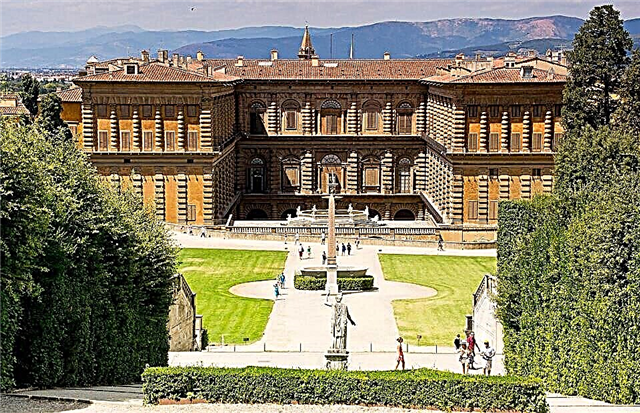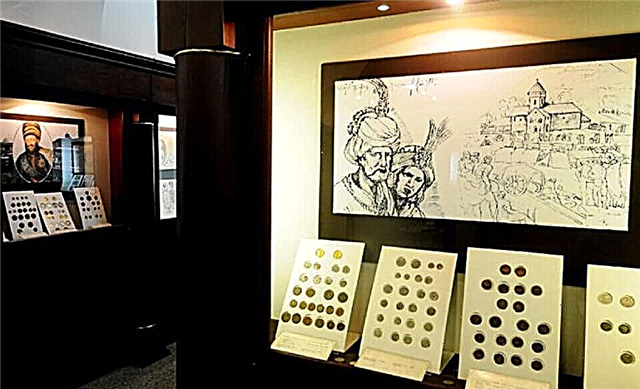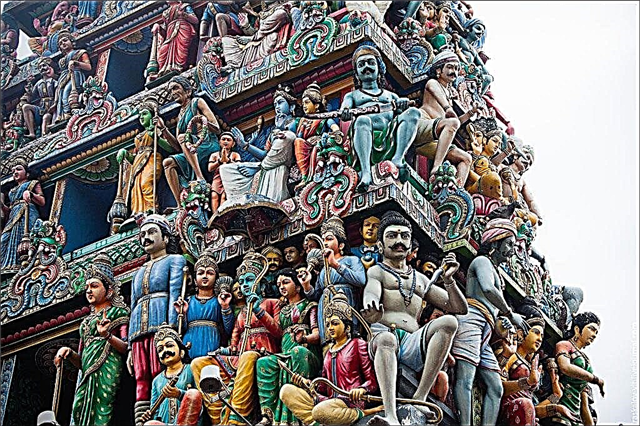Singapore is an amazing city-state that annually attracts thousands of seasoned tourists who appreciate the exotic culture of Asia and the desire for unusual entertainment. In one of the largest districts of the city - Chinatown, which amazes with its frantic rhythm and a string of various cafes and hostels - the oldest Singaporean Hindu temple, Sri Mariamman, is comfortably located. This majestic and very colorful building is rightfully considered one of the main historical attractions of Singapore.
History
It is well known that Singapore was a British colony for a long time. However, following the ubiquitous English, in 1819 the Indians decided to develop the local lands under the leadership of Naraina Pillai. This eminent official quickly earned the respect of the Indian community by organizing a construction company and a textile trade on the island.
Since ancient times, the inhabitants of India are famous for their strict adherence to religious rituals, and therefore Naraina decided to build a Hindu temple on Singapore soil. Finding a suitable site was not easy. The site originally proposed by the British authorities was completely unsuitable, since it did not have any source of fresh water, which is abundantly used in religious rituals.
It was possible to obtain suitable land only in 1823, and the construction itself took about four years. The first building was made entirely of wood, and a statue of Mariamman, the mother goddess, especially revered by ordinary peasants, was immediately installed in front of the entrance. This statue has been safely preserved to this day. What can not be said about the wooden building - it was successfully replaced with a brick one in the early forties of the nineteenth century.
However, those parts of the building that have reached the present were built closer to the sixties. The first gopuram, the gate tower inherent in all Hindu temples, was built in 1903. Then it consisted of three levels, but after twelve years the gopuram was rebuilt, adding three more, and it is in this form that it has survived to this day.

For a long time, Tamil immigrants (the people of South Asia, most of whom live in India) were received on the territory of the temple. They were in Sri Mariamman while they were building on the new land, looking for suitable housing and work. At the same time, no one ever kicked them out or urged them on, giving them time to adapt to a new life. In addition, only this temple had the right to conduct marriage rites, and oaths of love and fidelity were often sounded within its walls. In our time, Sri Mariamman is also active.
Description

Even if you don't know the exact address, walking around Chinatown is unlikely to miss Sri Mariamman. Its facade is richly decorated with figures of Indian gods, which are compactly located on six tiers of the gopuram. The interior decoration of the holy place is in no way inferior to the exterior. The spacious room is decorated with white columns, and the walls are skillfully painted with colorful images of divine beings and subjects of the most ancient religion. The main altar rises behind the arcade column. Of course, the main sanctuary is dedicated to Mariamman, however, other divine creatures are not deprived of attention.

Along the perimeter of the main hall are the holy places of the following gods: Ganesha (patron saint of prosperity and wisdom), Durga (a powerful warrior who protects both gods and ordinary people from demons), Iravan (a hero of the ancient Indian epic deeply revered in the Kuttantavar tradition) and Draupadi (earthly incarnation consort of Vishnu). The sanctuary of the latter is the second most important in the temple. To the left of Draupadi are five Pandavas - the protagonists of the "Mahabharata" (legends about the descendants of Bhavata - the legendary king). Also in the temple there are sculptures of yoni, a symbol of the feminine principle and lingam, the embodiment of the divine power of creation. The flagpole installed at the entrance is of no less importance. When some kind of celebration or religious ritual is coming, a warning banner is raised.
Those tourists who visit Singapore in October will be incredibly lucky. It is in the tenth month of the year that a large-scale holiday is held - Timiti. This is the time to give praise and honor to Draupadi, who, according to ancient Indian legends, walked bare feet on hot coals, thereby proving her integrity. Every year hundreds of Hindu practitioners come to the temple and try to repeat the feat of Draupadi, thereby atoning for their sins. This spectacle is so impressive that thousands of people come to see it.
The ritual of purification is preceded by an amazing procession: hundreds of people follow the priest from the neighboring temple of Sri Srinnivasa Perumal to Sri Mariamman. It is the priest who is the first to cross the pit filled with coals, and the believers are already following him. Hinduism assumes that if a person regularly observed the fasts and did not sin, the fire will not harm him. It is important to note that only men are allowed to walk the path of fire.
Travel tips before visiting

Every tourist who decides to visit Sri Mariamman should understand that the temple is not just another historical building, but the guardian of religious beliefs and the abode of the gods. That is why, before visiting directly, it is important to familiarize yourself with the following useful tips:
- Hindu tradition implies that one must greet and say goodbye to the gods. For this, small bells are hung in front of the entrance to the temple, one of which is worth ringing at the beginning and at the end of the visit. This is how you warn heavenly beings to enter and leave the temple.
- Representatives of any religious denomination can visit the temple, but this must be done - strictly barefoot
- Photos inside the building are allowed, but at an additional cost
- The temple has the so-called Main Altar, where the passage for visitors is prohibited.
How to get to Sri Mariamman
Temple address: 244 South Bridge Road
You can get to it by metro (Chinatown station, blue line) or by bus (Sri Mariamman stop, routes numbered 166 and 197).











